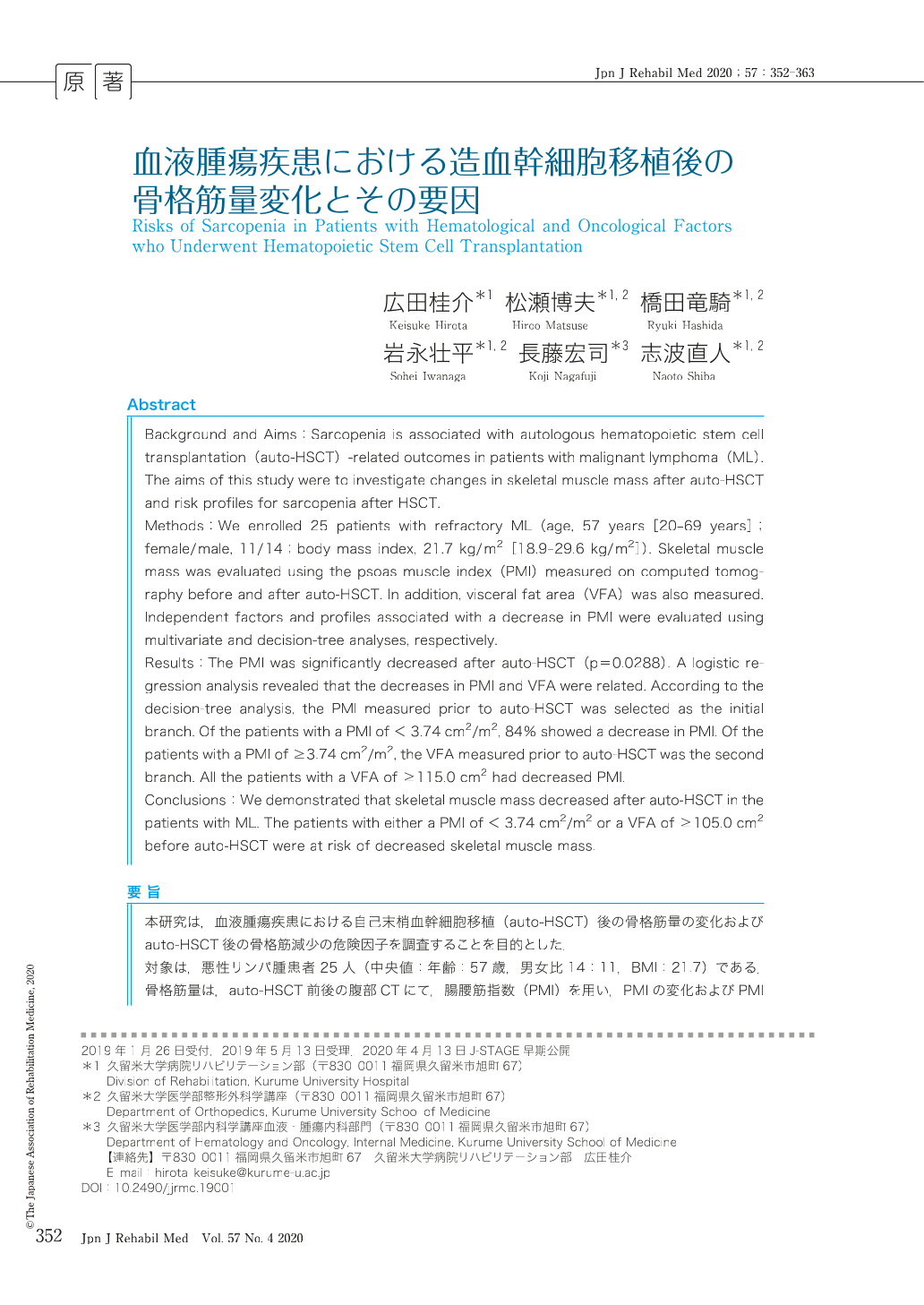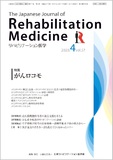Japanese
English
- 販売していません
- Abstract 文献概要
- 1ページ目 Look Inside
- 参考文献 Reference
要旨
本研究は,血液腫瘍疾患における自己末梢血幹細胞移植(auto-HSCT)後の骨格筋量の変化およびauto-HSCT後の骨格筋減少の危険因子を調査することを目的とした.
対象は,悪性リンパ腫患者25人(中央値:年齢:57歳,男女比14:11,BMI:21.7)である.骨格筋量は,auto-HSCT前後の腹部CTにて,腸腰筋指数(PMI)を用い,PMIの変化およびPMI減少に関連する因子を,データマイニングした.PMIはauto-HSCT後,有意に減少した.多変量解析にてPMIの減少に内臓脂肪面積(VFA)が関連していた.決定木解析では,auto-HSCT前のPMIが第1分岐因子と選択され,PMIが3.74cm2/m2未満の患者の84%にPMI減少が認められた.PMIが3.74cm2/m2以上の患者の第2分岐因子はauto-HSCT前のVFAであった.VFAが105.0cm2以上の患者全例にPMI減少が認められた.
Background and Aims:Sarcopenia is associated with autologous hematopoietic stem cell transplantation (auto-HSCT) -related outcomes in patients with malignant lymphoma (ML). The aims of this study were to investigate changes in skeletal muscle mass after auto-HSCT and risk profiles for sarcopenia after HSCT.
Methods:We enrolled 25 patients with refractory ML (age, 57 years [20-69 years];female/male, 11/14;body mass index, 21.7 kg/m2 [18.9-29.6 kg/m2]). Skeletal muscle mass was evaluated using the psoas muscle index (PMI) measured on computed tomography before and after auto-HSCT. In addition, visceral fat area (VFA) was also measured. Independent factors and profiles associated with a decrease in PMI were evaluated using multivariate and decision-tree analyses, respectively.
Results:The PMI was significantly decreased after auto-HSCT (p=0.0288). A logistic regression analysis revealed that the decreases in PMI and VFA were related. According to the decision-tree analysis, the PMI measured prior to auto-HSCT was selected as the initial branch. Of the patients with a PMI of < 3.74 cm2/m2, 84% showed a decrease in PMI. Of the patients with a PMI of ≥ 3.74 cm2/m2, the VFA measured prior to auto-HSCT was the second branch. All the patients with a VFA of ≥ 115.0 cm2 had decreased PMI.
Conclusions:We demonstrated that skeletal muscle mass decreased after auto-HSCT in the patients with ML. The patients with either a PMI of < 3.74 cm2/m2 or a VFA of ≥ 105.0 cm2 before auto-HSCT were at risk of decreased skeletal muscle mass.

Copyright © 2020, The Japanese Association of Rehabilitation Medicine. All rights reserved.


